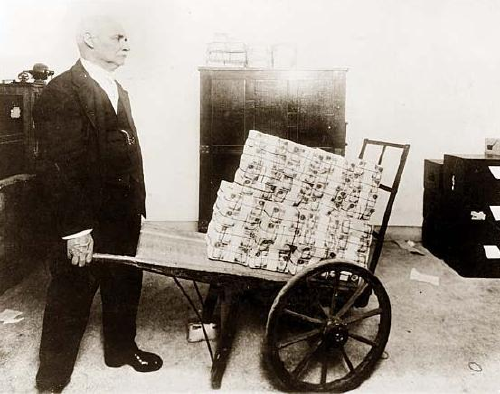“Quantitative Easing”- not as confusing as you’d think.
“Quantitative Easing” sounds like some erudite process performed by financial wizards, the particulars of which we could never understand. In reality, it’s much simpler. Explaining its particulars does take a bit of doing, though.
The term “Quantitative Easing” is really rather misleading. All it is, really, is the Fed injecting new money into the economy. The Fed is often increasing the money supply, but QE involves doing so in ways other than its normal methods (more on its “normal methods” in a moment). It is no more “quantitative” than any other process involving money, and “easing” just means “increasing the money supply.”
In a “normal” economic environment, the Fed can increase the money supply three ways:
- Purchasing Treasury and Federal Agency securities on the open market, known as “Open Market Operations.” The Fed uses new dollars (“printing money”) to buy those securities from banks.
- Lowering the Federal Discount Rate. The Discount Rate is that rate at which banks can borrow money “overnight.” Overnight money helps ensure that a bank can meet its reserve requirements for the day. Notably, banks almost never borrow money at the “Discount Window,” but rather lend money to each other for this purpose.
- Lowering Reserve Requirements. If the bank isn’t required to have as much money on reserve, it is free to loan it out. People typically borrow money from banks only if they are going to spend it.

All three of these method involved lowering something- interest rates, the discount rate, or reserve requirements. By lowering these rates, the Fed tries to inject money into the banking system. The problem the Fed faces now is that all of these rates are at zero (or, in the case of reserve requirements, as low as they are willing to go).
So instead of one of these methods, the Fed creates money “ex nihilo”- out of nothing- and uses it to purchase different kinds of securities from banks on the open market.
If creating money ex nihilo sounds shady, that’s because it is. Simply creating money can wreak havoc on the money supply and on the public’s perception of the monetary system. If QE gets past some unknown “tipping point,” inflation could spin out of control. On the other hand, QE will be very helpful for those banks that do receive it. Hence, “another round of quantitative easing” is not a decision the Fed, or the markets, take lightly.



